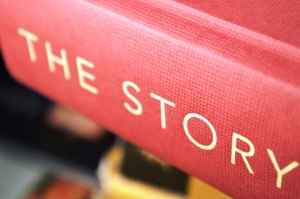Story, Epic or even Saga, what is the difference? David Lowe’s post from last year gives a good description of each. However, in my opinion, there is not much difference. A story, epic or saga all narrate the type of user, the need of the user, and the value returned by fulfilling that need. The only real difference is the granularity at which it describes that need and resulting value. For example, stories may focus in on a particular feature whereas a saga may narrate the product as a whole. Whatever the size of the story, the thing that must be remembered is that it is just a placeholder for conversation. As Ron Jeffries says, it should be “an exchange of thoughts, opinions, and feelings” regarding the customer requirement.
User stories were first conceived in the early days of the Extreme Programming movement. Since then, much has been written about user stories and epics, how they are written, their benefits and how they form the product backlog. However, many people seem to have misunderstood their purpose.
Some Product Owners seem to have taken a very formulaic approach to the generation of items for the backlog. Almost like following a recipe in a cookbook, they will first write all of the epics required for the product, then once this is complete they will break all the epics down into smaller chunks or stories. Then they will obtain some arbitrary story points for each item and, voila, they have cooked up some delicious stories ready to be devoured by the team in their sprints.
This seems very similar to the approach used in traditional projects, where all the analysis and all the requirements generation is done up front, then, once estimates have been given against those requirements, the work is handed over to the development team for completion.
Apart from the fact that there is a big possibility that most of the things identified as stories will probably never be worked on and therefore a lot of time and effort would have been wasted in generating these, the recipe described above does not mention at any point any conversation about the epics or stories.
Without doubt, conversation is the most vital ingredient in a recipe for successfully identifying and understanding requirements and should be added in as early as possibly. And as Mike Cohn sums it up, “the most important part of a story is the conversations it creates”.
So, remember, don’t forget to add in the conversation.
Image credit: edududas
